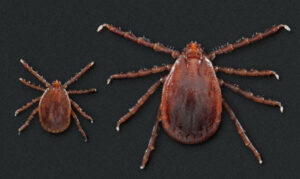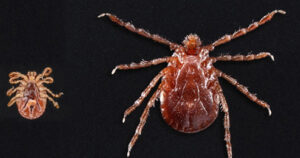Asian longhorned ticks have been found in 19 states, including North Carolina


According to researchers, this invasive species can reproduce quickly, hide in tall grass and survive harsh conditions.
Luckily, compared to other well-known native ticks, the Asian longhorned tick appears to be less attracted to human skin, but have been found on people and also pets, livestock, and wildlife.
Three cows in Ohio died after being bitten tens of thousands of times, promoting the CDC warning. An analysis published in the Journal of Medical Entomology reveals that scientists gathered nearly 10,000 ticks in around 90 minutes at the cow pasture.
The ticks “are light brown in color and are very small, often smaller than a sesame seed,” according to the USDA Animal and Plant Health Inspection Service website, which also explains that female Asian longhorned ticks can reproduce without a male, and that “it only takes a single tick to create a population in a new location.”
Many species of ticks live in the United States. Each one can carry and spread different types of germs.
When a scientist discovers a new germ in a tick, studies are needed to determine if the tick can carry and spread germs to a person or animal.
A recent experimental study found that this tick is not likely to contribute to the spread of Lyme disease bacteria in the United States, while another laboratory study found that this tick has the ability to carry and spread the bacteria that causes Rocky Mountain spotted fever (Rickettsia rickettsii), though the germs that cause Rocky Mountain spotted fever have not yet been found in these ticks in nature.
